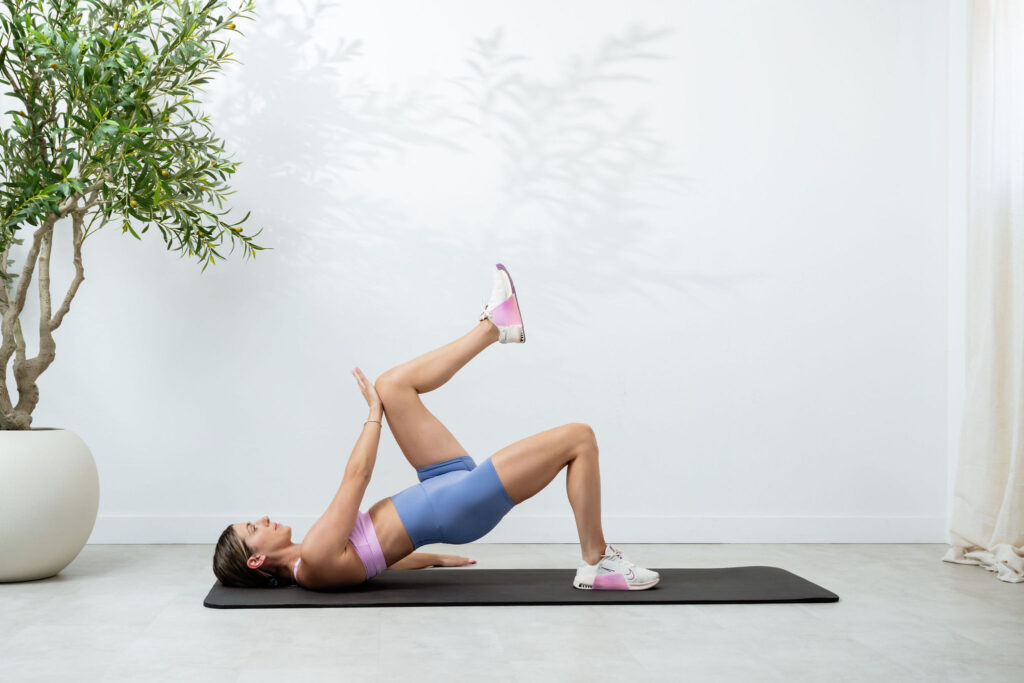
6 weeks after giving birth you show up at your OBGYN or Midwife’s office. They check that your uterus has returned to pre-pregnancy size, that your incision or vaginal tear is healing as expected and they “clear” you for exercise. We have been given this false expectation that after 6 weeks we are somehow magically healed and ready for everything we were doing pre-pregnancy. The reality is that your recovery can last anywhere from 6-12 months, with 18 or even 24 months not being unusual.
Did you know?
- During vaginal childbirth, the pelvic floor muscles stretch 2-3x their resting length?
- That perineal tearing occurs In around 85% of vaginal births?
- That 50% of women will experience prolapse symptoms? Some studies even suggesting up to 68%
- 40-70% of women experience urinary incontinence (stats can vary significantly from study to study)
- 1 out of 3 women suffer sphincter damage during childbirth which can result in fecal incontinence
- During a C-section, you undergo major abdominal surgery that cuts through 7 years of tissue
- And that even though the incision may appear healed after 6-8 weeks, that the tissue is continuing to mature for anywhere from 6 months to a year.
- While you are breastfeeding relaxin levels may also remain elevated, and may find that joint-loosening effects persist a little longer. Your body will not return to its pre-pregnancy hormone state whille you are.
- And as long as your body is still producing milk, your pelvic floor may have decreased estrogen which is key for pelvic health. These hormones take time to return to normal and may result in a slower spontaneous recovery from pelvic floor dysfunction symptoms.
Just from reading these bullet points alone, you can likely see why 6 weeks is not nearly enough time. If you injured your knee or shoulder, you would go to physical therapy and likely rehab and slowly progress your training to heal your injury. The same approach should be taken after childbirth. Although things like Diastasis can spontaneously heal, there is still so much going on with your body; your lack of sleep, your nutrition/hydration, your genetics, the support you have, your mental health, hormones etc.
Now my goal here isn’t to scare you out of your rehab and training. Education and awareness during this (temporary) season is so crucial. Understanding your symptoms, or potential symptoms, is going to help you know how hard to push, if you’re doing too much for where your body is at and give you a way more realistic approach to your recovery. The 6 week timeline is setting women up to fail and endure long term dysfunction.
So, you’re cleared for exercise. Where to start?
Your primary focus during the first 2 weeks postpartum should be to rest, limit standing and walking, enjoy some R&R with your newborn, nourish your body and sleep when you can.
Giving birth is a traumatic physical (and emotional) event and structured movement is not a priority during this period. That being said, there are gentle movements you can do during this time. I will be breaking down the 0-6 weeks in a separate post.
Please note, that all of this is general guidance and not meant for medical diagnosis. If you are experiencing ANY symptoms ranging from leaking, urinary incontinence, pelvic heaviness or the feeling like something is falling out, pelvic pain, low back pain then PLEASE seek help from a Pelvic Floor Physical Therapist.
MONTHS 0-3:
Navigating those early postpartum weeks/months (outside of the gym) is both euphoric and monumentally overwhelming. Your intention around exercise during these first 6 weeks (especially), and the 4th trimester in general, is to heal your body. The focus here is laying the foundation. Start with a re-learning and rehab process; retraining correct breathing patterns and then syncing that with movement. Improve awareness of body, alignment, posture & stabilization. During this phase I like to stick to resistance band, light dumbbells/ kettlebells etc. It should feel easy.
For more guidance on HOW to approach or for guidance on your program, check out my return to strength training program HERE
MONTHS 3-6:
During this period, start introducing more volume, load and intensity. It’s important to still gradually and progressively overload to increase the demands. Introduce a consistent routine and begin adding layers to your training. Awareness of potential and/or current symptoms will help guide you on what your body is or is not ready for. The workouts will increase in challenge but you are likely still not hitting pre-pregnancy weights.
MONTHS 6-9:
Here, overall function has likely improved, your body is feeling stronger and you can begin to further increase the difficulty and complexity of movements. You can likely tolerate heavier weight with a lower rep scheme, permitting symptoms aren’t increasing.
MONTHS 9-12:
This might be where you begin to feel more like yourself in your training. Especially if you have dedicated the time to recover from pregnancy/birth, built a strong, sustainable foundation and gradually progressed your training.
For some, you may hit that year mark and still not quite be where you thought you would at this point. I promise you will get there with the direction, support and help you deserve.
Here to answer any questions you might have, mama.
I’m deeply passionate about helping women feel strong, informed, and confident through every stage of motherhood. You deserve more than just a list of do’s and don’ts or generic modifications. With years of hands-on coaching across all kinds of athletes and clients, I blend real-world experience with specialized pre and postnatal knowledge to create strength programs that go far beyond basic adjustments. This is high-level, accessible training - built for your body, your season, and your goals
EXPLORE MORE POSTS